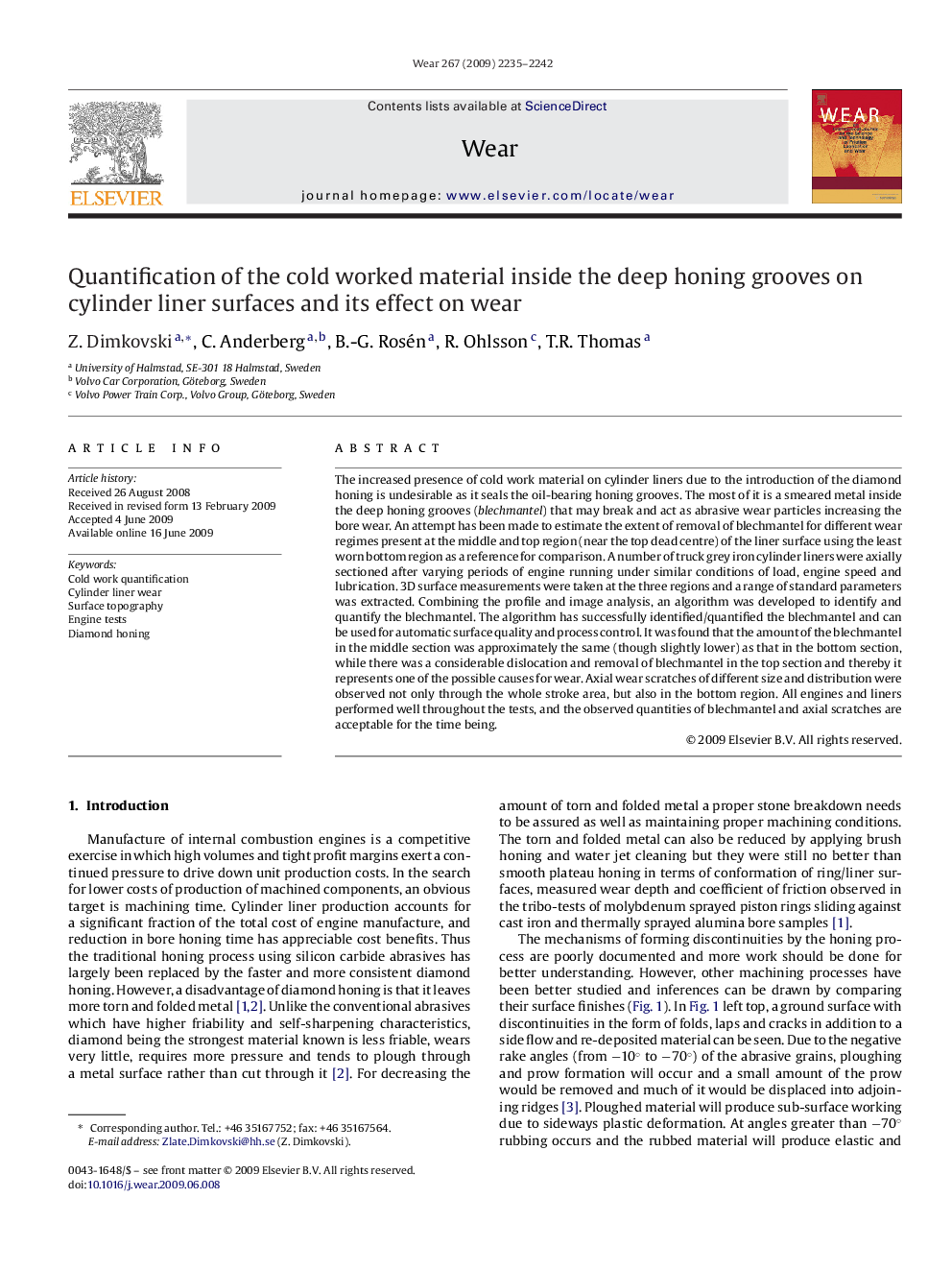| Article ID | Journal | Published Year | Pages | File Type |
|---|---|---|---|---|
| 618997 | Wear | 2009 | 8 Pages |
Abstract
The increased presence of cold work material on cylinder liners due to the introduction of the diamond honing is undesirable as it seals the oil-bearing honing grooves. The most of it is a smeared metal inside the deep honing grooves (blechmantel) that may break and act as abrasive wear particles increasing the bore wear. An attempt has been made to estimate the extent of removal of blechmantel for different wear regimes present at the middle and top region (near the top dead centre) of the liner surface using the least worn bottom region as a reference for comparison. A number of truck grey iron cylinder liners were axially sectioned after varying periods of engine running under similar conditions of load, engine speed and lubrication. 3D surface measurements were taken at the three regions and a range of standard parameters was extracted. Combining the profile and image analysis, an algorithm was developed to identify and quantify the blechmantel. The algorithm has successfully identified/quantified the blechmantel and can be used for automatic surface quality and process control. It was found that the amount of the blechmantel in the middle section was approximately the same (though slightly lower) as that in the bottom section, while there was a considerable dislocation and removal of blechmantel in the top section and thereby it represents one of the possible causes for wear. Axial wear scratches of different size and distribution were observed not only through the whole stroke area, but also in the bottom region. All engines and liners performed well throughout the tests, and the observed quantities of blechmantel and axial scratches are acceptable for the time being.
Keywords
Related Topics
Physical Sciences and Engineering
Chemical Engineering
Colloid and Surface Chemistry
Authors
Z. Dimkovski, C. Anderberg, B.-G. Rosén, R. Ohlsson, T.R. Thomas,
